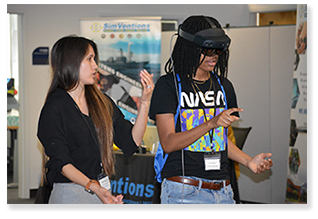Faculty Advisor/Mentor
Jose Padilla
Location
Virginia Modeling, Analysis and Simulation Center, Room 1201
Conference Title
Modeling, Simulation and Visualization Student Capstone Conference 2023
Conference Track
General Sciences & Engineering
Document Type
Paper
Abstract
This paper presents preliminary research using Natural Language Processing (NLP) to support the development of conceptual modeling frameworks. NLP-based frameworks are intended to lower the barrier of entry for non-modelers to develop models and to facilitate communication across disciplines considering simulations in research efforts. NLP drives conceptual modeling in two ways. Firstly, it attempts to automate the generation of conceptual models and simulation specifications, derived from non-modelers’ narratives, while standardizing the conceptual modeling process and outcome. Secondly, as the process is automated, it is simpler to replicate and be followed by modelers and non-modelers. This allows for using a common process and generating similar “blueprints” facilitating communication and collaboration efforts. Overall, NLP presents an opportunity for the M&S community to engage with stakeholders and scholars across domains in the simulation development process, lowering entry barriers and increasing participation.
Keywords:
Conceptual modeling, Conceptualization, Natural language processing
Start Date
4-20-2023
End Date
4-20-2023
Recommended Citation
Shuttleworth, David and Padilla, Jose, "Towards NLP-Based Conceptual Modeling Frameworks" (2023). Modeling, Simulation and Visualization Student Capstone Conference. 4.
https://digitalcommons.odu.edu/msvcapstone/2023/sciencesandengineering/4
DOI
10.25776/j2hp-p941
Towards NLP-Based Conceptual Modeling Frameworks
Virginia Modeling, Analysis and Simulation Center, Room 1201
This paper presents preliminary research using Natural Language Processing (NLP) to support the development of conceptual modeling frameworks. NLP-based frameworks are intended to lower the barrier of entry for non-modelers to develop models and to facilitate communication across disciplines considering simulations in research efforts. NLP drives conceptual modeling in two ways. Firstly, it attempts to automate the generation of conceptual models and simulation specifications, derived from non-modelers’ narratives, while standardizing the conceptual modeling process and outcome. Secondly, as the process is automated, it is simpler to replicate and be followed by modelers and non-modelers. This allows for using a common process and generating similar “blueprints” facilitating communication and collaboration efforts. Overall, NLP presents an opportunity for the M&S community to engage with stakeholders and scholars across domains in the simulation development process, lowering entry barriers and increasing participation.

